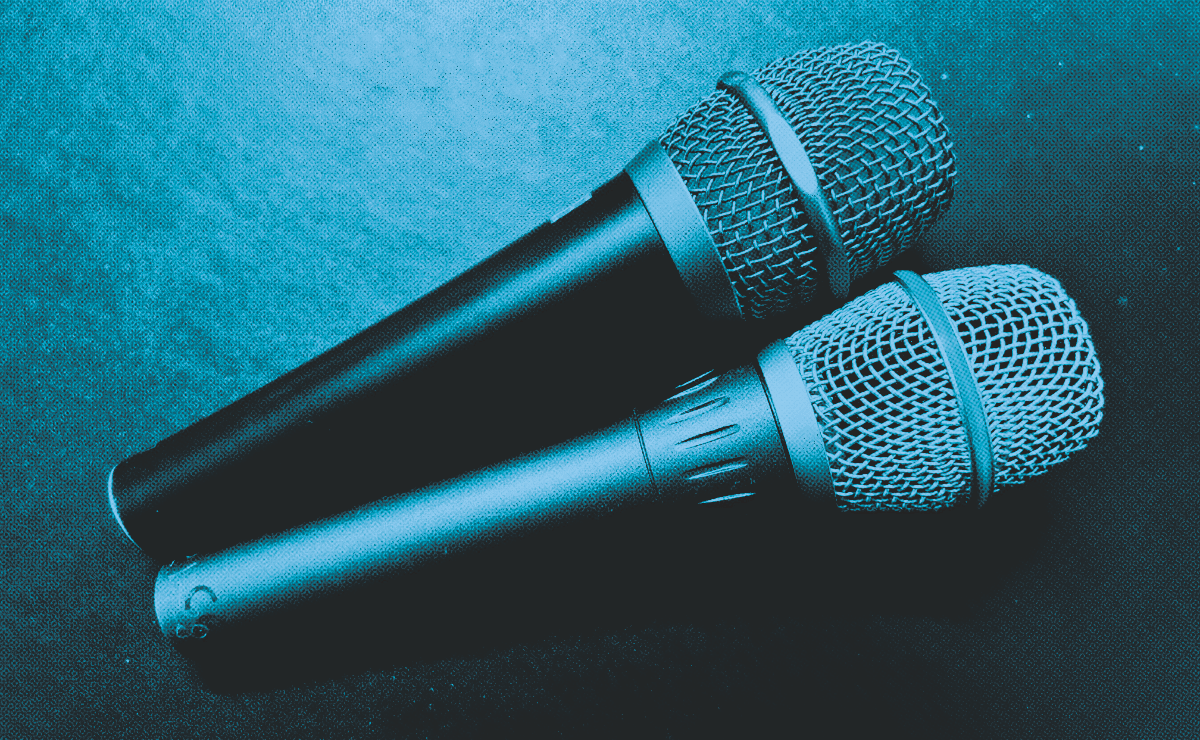On singing in 2025

In 2020, my band Waxlimbs stopped playing shows as the (very much ongoing) COVID 19 pandemic began, and for a long time it didn't feel like we'd ever get back on stage. When we did in 2022, I hit a massive snag as a vocalist; I need to wear a respirator while performing.
It is difficult to convey in a blog post how much this sucks to do despite my need to not get covid, ever. Breath support is now hard-mode, and the key problem I want to provide some solutions for is front-of-house's difficulty getting my voice to cut through a mix. It's hard to hear me clearly- there's a layer of fabric in front of my face after all! This, and having a low, raspy voice forms the cherry on top of a dysphoria spiral.
Workarounds
There are elements of singing lessons and voice training that can help a little, sure. My voice has a brighter timbre than it used to, and I have a better sense of how to project. For this post however, I want to focus on helpful tools since training only goes so far.
Masks
The first helpful thing has been to narrow down which respirators feel the most acoustically transparent without compromising on safety. In rehearsals I typically wear duckbill-style masks (Eclipses) which are very comfortable, breathable, and don't interfere too much with a microphone's ability to pick up my singing, plus they're N95-rated. I've been able to get these from my local mask bloc for free, which is a huge bonus. They are, however, ugly as sin and don't come in black so they won't work for shows.
I've been trying various tri-fold KN95s for a while now, and have found Breatheteqs to be one of the more breathable models while still providing a good seal. They come in black so they're fashionable, and they don't muffle too much. I like tri-folds because they don't hit the mic when I bring it close to my face, and they fit well under our costume masks. They're a bit pricey but saving them for gigs has made it work.
Microphones
Microphone choice also plays a huge role in being heard in a live mix, and the "default" sm58 doesn't cut it. To illustrate the technical issue: I struggle to be picked up by the mic and as a result struggle to hear myself in the monitors, so front of house has to thread the needle by having my mic hot while the wedges are boosted. This creates a lot of feedback potential.
To work around this, I've been making use of microphones with hypercardioid[1] polar patterns. Hypercardioid mics aggressively reject sound coming from the sides of the capsule, while being sensitive to sound sources directly in front. This makes them very directional, which means that as long as the mic is pointed away from the monitors we shouldn't have to worry (as much) about feedback.
When I first upgraded from '58s, I got myself an SE V7[2] since it was only marginally more expensive than an sm58 (by about $30 CAD). In the time since getting this mic, I've still felt it's not quite bright enough to compensate for a respirator's interference at shows.
Recently, there was a sale at my local music store and I managed to get the mic I actually wanted to buy at a discount: a Shure Beta 87a.[3] It's a hypercardioid mic like the V7, but is a condenser which means it needs 48v of phantom power to run. The Beta 87a is significantly brighter than the V7 which should better compensate for the muffling effect of a mask. I've never used a condenser at gigs before though (excluding FTG), so I'm in new territory here.
The bigger picture
None of these options fully solve the issue for me. It's still a fight to make this work and it partly depends on things I have no control over like room acoustics, PA systems, and the engineers running the board.
I mostly wanted this post to focus on ideas and solutions to a struggle that has been demoralizing and isolating.[4] To be a vocalist who practices covid safety in 2025 is to exist in the periphery, clawing at scrap opportunities to be heard while disadvantaged in ways your music scene peers aren't.
Mask-mandatory shows work.
When we filmed our live doc 'From The Garden', we used our rehearsal space for the show and as a result were able to make the show mask-mandatory for the audience. Nobody fought us on this, and I was able to take the calculated risk of singing unmasked for the sake of the recording.
When we played Long Winter in early 2023, they had a massive turnout despite it being a mask-mandatory event, which was proof to us that if you require safety measures such as masking, audiences will attend regardless. Less people get sick and people still have a good time- the downsides are next-to-none.
The fight I experience every time I sing on stage is an ongoing thing, but it gets a little easier as I tweak my tools, vocal practice, and headspace. While frustration with a lack of covid safety accommodations and accentuated vocal dysphoria weigh on me, it is the current reality of trying to do this thing that I do.
Singing is important to me. Performing our songs with my bandmates is important to me, and I refuse to give that up.
♥ Lex
PS: Thank you to Noé for proofreading! I don't ususally write posts this involved, so the extra eyes were extremely helpful.

